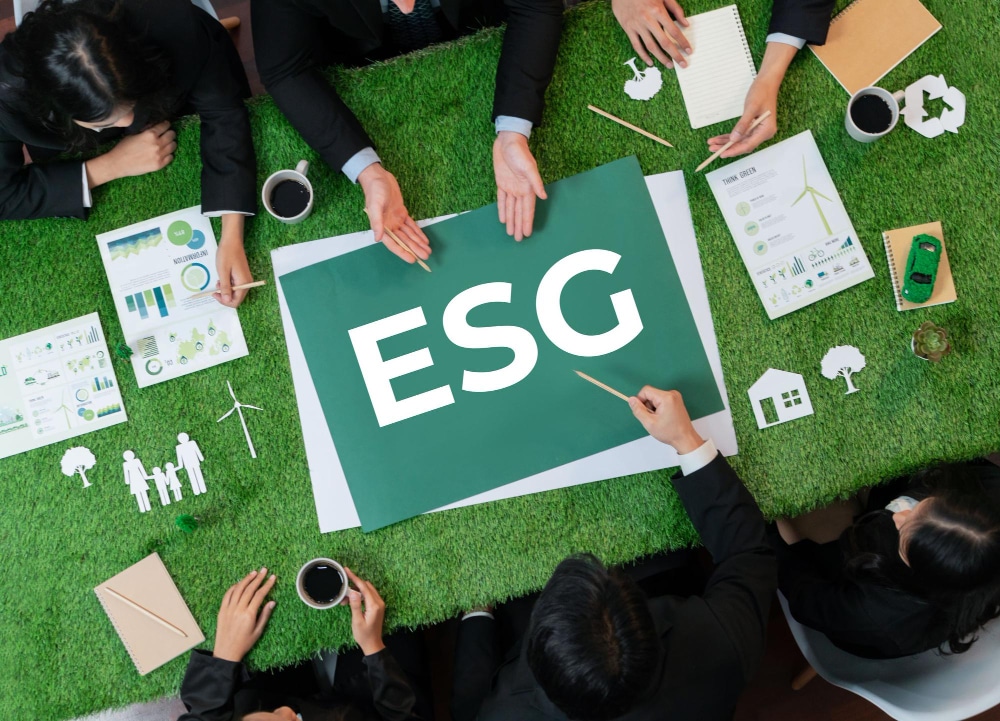In the dynamic landscape of 2024, navigating the intricate maze of ESG regulations promises to be a challenging yet essential journey for companies across sectors. As businesses prepare for the regulatory landscape of ESG regulations 2024, it’s crucial to anticipate and address the various facets of heightened scrutiny and proactive due diligence that come with ESG compliance. This article serves as a comprehensive guide to help companies not only meet regulatory expectations but also leverage ESG as a strategic advantage in the years to come.
Heightened scrutiny: Navigating the regulatory tsunami
The year 2024 brings forth a regulatory tsunami, marked by the introduction of mandatory due diligence laws such as the EU’s Corporate Sustainability Reporting Directive (CSRD). This directive signifies a significant shift in regulatory expectations, emphasizing rigorous reporting on environmental and social impacts, coupled with demands for increased supply chain transparency. As these regulations become more stringent, companies need to brace themselves for a higher level of scrutiny and transparency.
Simultaneously, investors are turning the spotlight on ESG factors, recognizing their centrality in the decision-making process. To secure funding and attract responsible capital, companies must hone their sustainability narratives, showcasing robust ESG integration into their corporate strategy. Transparent reporting becomes not just a compliance requirement but a strategic imperative to gain the trust of investors who increasingly prioritize companies with strong ESG credentials.
Moreover, eco-conscious consumers are exerting their power, driving a significant shift in market dynamics. To resonate with this consumer awakening, companies must implement ethical sourcing practices, embrace climate-friendly initiatives, and overtly demonstrate their commitment to social responsibility. In an era where brand loyalty is tied to environmental and social values, companies that align with these expectations stand to gain a competitive edge.
Proactive due diligence: Building a resilient foundation
Moving beyond compliance, companies need to view ESG not as a burden but as a roadmap to a more sustainable and resilient future. Proactive due diligence becomes paramount, starting with a deep dive into supply chain practices. Mapping the entire chain, conducting thorough due diligence on potential risks – be they social, environmental, or ethical – and implementing robust monitoring mechanisms are critical steps to ensure responsible sourcing across the board.
In parallel, developing a proactive risk management system is crucial for identifying and mitigating potential ESG-related issues before they escalate. The ability to adapt to evolving regulations and changing consumer demands is a key component of this risk mitigation arsenal.
Transparency as a strategic imperative
Transparency stands as a strategic imperative in the complex terrain of ESG considerations, serving as a shield against the uncertainties that characterize this landscape. In the evolving business ecosystem, where stakeholders increasingly scrutinize companies for their ethical and sustainable practices, transparency becomes not only a defensive measure but a proactive strategy for building trust and fostering long-term relationships.
One crucial aspect of transparency is the accessibility of ESG data. Companies are expected to make this data readily available, providing stakeholders with a comprehensive view of their environmental, social, and governance performance. This openness is not merely a compliance requirement; it’s a commitment to accountability and responsible business conduct. By offering a clear and detailed account of their ESG metrics, companies demonstrate a willingness to be held accountable for their impact on the environment, society, and governance practices.
Communicating sustainability goals and progress is another vital facet of transparency. Companies need to articulate their commitment to ESG principles and outline the steps they are taking to achieve their sustainability objectives. This communication goes beyond legal compliance; it becomes a powerful tool for engaging stakeholders and creating a shared vision for responsible business practices. Clear and concise communication builds understanding and trust, aligning stakeholders with the company’s journey toward sustainability.
Engaging in open dialogue with stakeholders forms the cornerstone of transparency in the ESG landscape. This involves not just broadcasting information but actively seeking input, feedback, and perspectives from diverse stakeholders – including investors, employees, customers, and communities. Dialogue creates a dynamic exchange of ideas, concerns, and expectations, enabling companies to respond to evolving ESG priorities. By actively involving stakeholders in the decision-making process, companies demonstrate a commitment to shared values and responsible governance.
Beyond compliance, unlocking real advantages
While compliance is the starting point, it’s essential to recognize that ESG isn’t just a box to tick. Embracing responsible practices unlocks real advantages for businesses. Building resilient supply chains ensures stability in uncertain times marked by geopolitical storms and climate disruptions. Sustainable practices become a mitigating factor against resource risks, securing long-term stability.
Furthermore, ESG becomes a catalyst for innovation, driving the development of eco-friendly solutions and addressing social challenges through business initiatives. Companies that align with ESG principles also become magnets for top talent, attracting individuals who share a commitment to creating a better future.
A competitive edge for the future
As consumers, investors, and regulators increasingly prioritize ESG, companies that embrace responsible practices secure a competitive edge. In a future where sustainability and ethical conduct are the new market currency, companies that navigate the ESG storm with purpose position themselves for long-term success.
In conclusion, 2024 is not just a year to weather the ESG storm but to navigate it with purpose. By preparing for heightened scrutiny, prioritizing proactive due diligence, and embracing transparency, companies can transform the challenges of ESG compliance into a roadmap for a more sustainable, resilient, and successful future. The strategic integration of ESG principles is not only a regulatory requirement but a pathway to staying ahead in a rapidly evolving business landscape.
